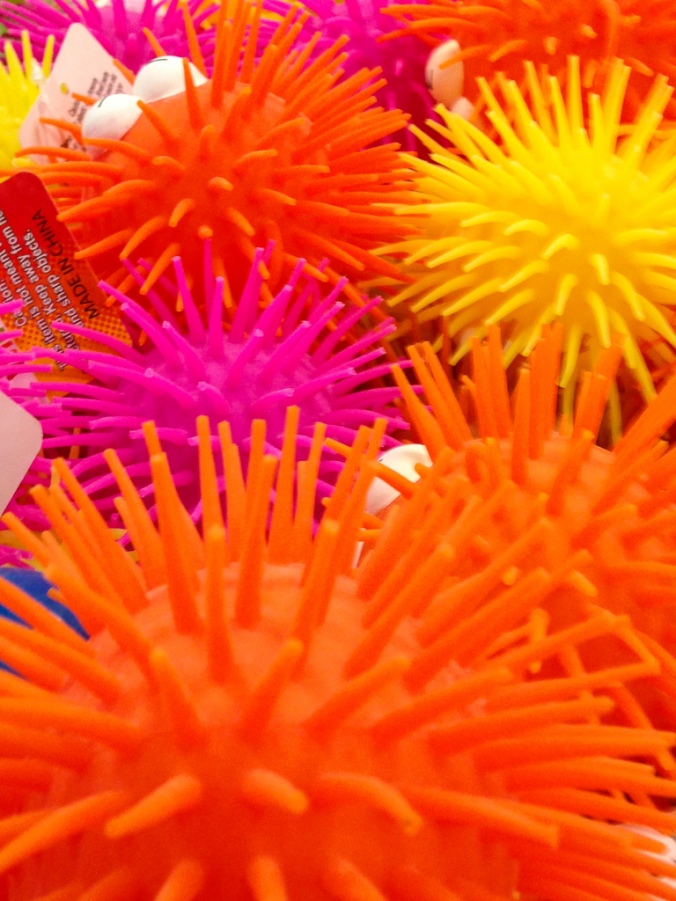
Koosh Ball Toss
Koosh balls are used for a variety of reasons in the classroom. One of my favorite activities in the first few weeks of school is a Koosh ball toss. This activity serves two purposes: 1. Build community in the classroom, and 2. Establish classroom routines.
In order to help teach classroom routines, the teacher spends some time instructing students what to do when furniture needs to be moved, or when students are simply about to participate in a movement activity. Taking time to be explicit in movement expectations pays off in the long run and helps establish effective classroom management practices.
When I start this activity, I tell students that when they participate in a movement activity, no talking is permitted. We practice standing up, pushing chairs in, and standing behind our desks. Even though it may seem elementary, I actually have students practice this a couple of times. I make a game out of it by timing them to see how quickly (and quietly) they can do so. Next, I divide the students into groups so they know where to put desks and chairs around the room to create space for the activity. I model how to pick up and set down desks and chairs quietly. We practice this a couple of times (again timed to see how quickly and quietly they can do so). After moving the furniture, I indicate where students should stand to receive the next set of directions. Depending on the length of the class period, this type of routine modeling could take a majority of one 50 minute class period.
To actually begin the ball toss activity, the class is divided into two or three groups. A leader is chosen for each group. The leader tosses the ball to another person in the circle (not to his or her immediate right or left). That person tosses the ball to another person and so on until every person has received the ball one time. The ball is then tossed back to the leader. If at any time the ball is dropped, the progress starts from the beginning. The idea is to pass the ball around the circle without dropping the ball. The passing order does not change. Once the group has successfully completed a round, the group is timed. Each group is timed to determine which group is able to pass the ball (without dropping it) the fastest. The competition can go on as long as the teacher wishes to do so. There are also variations: 1. Students could state the name of the person they are passing the ball two. 2. A second or third ball can be added so greater concentration is needed as more balls are being passed. 3. After the small group toss, students can participate in a large group toss.
Once the activity is completed, the teacher can instruct how to put the room back to its original setup. If this was modeled initially, this process should be able to do quickly. Or, the teacher can move into a classroom discussion. When I completed this activity, I often moved into a Socratic Seminar setup. Since the desks were already pushed aside, I modeled how to set up an inner and outer circle discussion arrangement. We then discussed the purpose of the activity as well as how the activity can act as a metaphor for our year together.
By the end of this activity, I have modeled how to stand for movement activities, how to move furniture to the side, how to set up for Socratic Seminar discussions, and how to be quiet and efficient overall. By doing it once, I can always remind students later in the year (once they are comfortable in the classroom setting) how perfectly they were able to move. Thus, classroom management issues are minimized.
Modeling routines at the start of the year is critical at any level regardless if teachers are teaching at the elementary, middle, or high school level. Adding movement early in the year sets a precedent for the remainder of the year. Plus, it becomes natural for both the student and the teacher.